The Paris Agreement: Auditing Climate Change
Jack Cartier Walsh is a Senior Associate Auditor with Ernst & Young. He brings his accounting and auditing skills to the critical challenge of climate change. JCW developed this article for earthDECKS from a recent talk he gave in San Francisco.
The Paris Agreement Milestone
The Paris Agreement is widely regarded as the most important document ever drafted in the slow international battle to mitigate and adapt to the effects of climate change. Its eloquent passages have strengthened the world’s resolve to tackle the problem with renewed vigor and cooperation. But its creation was the result of a negotiation process that has endured for well over two painstaking decades. The UNFCCC began in 1992 as a result of the Intergovernmental Panel of Climate Change (IPCC)’s urging UN to approach the issue with urgency. Over twenty years later, that same international body finally produced a worthwhile document that can survive the bitter disagreements that have typically surfaced between developing and developed countries.
The Paris Agreement can be thought of as analogous to the US Constitution relative to previous failed iterations, such as
- the Bali Action Plan,
- the Durban Platform for Enhanced Action, and
- the Buenos Aires Plan of Action, which can together be collectively summarized as the Articles of Confederation.
In US history, the Articles of Confederation were ineffective and did not allow the Continental Congress to govern the original thirteen states with necessary authority. The rewritten US Constitution afforded Congress that power, not unlike the Paris Agreement’s future ability to guide the international community towards a 1.5 degree Celsius emissions pathway.
Below are presented five articles that stand out as essential context for the history of international climate negotiations. I explain how all countries united under the Paris Agreement in 2015, and how that document can guide our economies moving into the 21st Century. They should serve as inspiration to a future generation of thinkers and innovators, informing the decisions of governments for decades to come.
Article 5
This article covers forests and the concept of Reducing Emissions from Deforestation and forest Degradation (REDD). It is cleanly presented as a two-paragraph statement, directly following the architectural purpose of the Agreement known as the intended nationally determined contributions, or INDCs. While Article 4’s layout of INDCs is important in its own right, and should be thought of as a country’s ‘annual report’ of greenhouse gas emissions, it is telling that the importance of forests are emphasized concisely in the very next section of the Paris Agreement. REDD has been debated. Critics argue in a collection of articles entitled NO REDD that “REDD is being used to establish a new set of tradable property rights based on trees and other environmental services, while at the same time propping up extractive industries. From an environmental perspective, REDD will not save the climate nor protect forests, nor will it stop dangerous emissions levels. In fact, REDD will offer polluting industries a way to avoid emissions reduction through cheap REDD offsets and allow them to actually increase pollution.”
Although debate is useful, it should not undermine the overriding consensus reached by the international community: that forests emerged as the surprise winner from the agreement, since many believed that industry lobbying would dampen any strong statements made in support of the REDD concept. In particular, large agricultural stakeholders possess influence over international negotiations because they contribute to other targets declared by the UN, such as Sustainable Development Goal (SDG) #2: Zero Hunger. While these voices are important to listen to, the carbon economics of forest conservation are too evident to reject.
 Source: United Nations Framework Convention on Climate Change
Source: United Nations Framework Convention on Climate Change
Put simply, if the world has only $1 to spend, it is more economical to use that dollar to conserve one tree than to reduce emissions of GHG by one unit. In the context of carbon accounting, this raises the value of forests substantially.
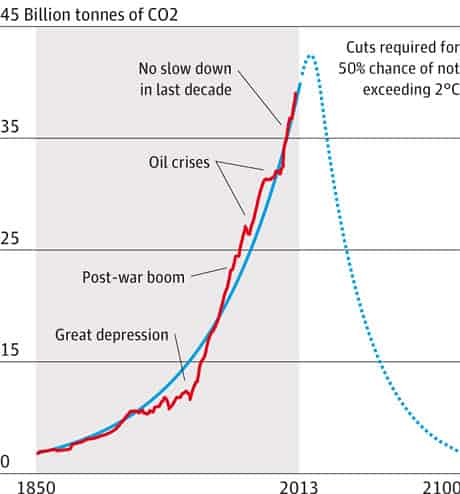
As a result of Article 5, some countries have taken bolder action to protect their forests and other carbon sinks. Sixty countries mention REDD in their first Intended Nationally Determined Contribution (INDC), submitted to the UN. The Forest Carbon Partnership Fund works with countries to implement REDD. Not surprisingly, Costa Rica has taken a leadership role in forming a national program covering its forests, even forming a government website dedicated to Costa Rica REDD. But the Amazon has also been pursued like a gold rush and some countries are less willing to adopt this model and follow the path of the Paris Agreement.
Source: CO2 emissions since 1850 (red); exponential growth (blue); cuts to hit climate target (dashed). Photograph: guardian.co.uk
In 2017, Brazil opened up several million acres of the Amazon to miners to developers. This was met with international condemnation, including Norway’s threatened suspension of millions of dollars of annual payments for rainforest conservation to the Brazilian government. Faced with this backlash, Brazil withdrew their decision. Starting in 2020, thanks to the global stocktake of INDCs, the international community will be able to ‘name and shame’ countries that are not taking Article 5 seriously, and a vast array of data will be ready to support assertions that REDD is absolutely necessary in order to achieve the targets in Article 2 (1.5 degrees Celsius limit compared to pre-industrial levels).
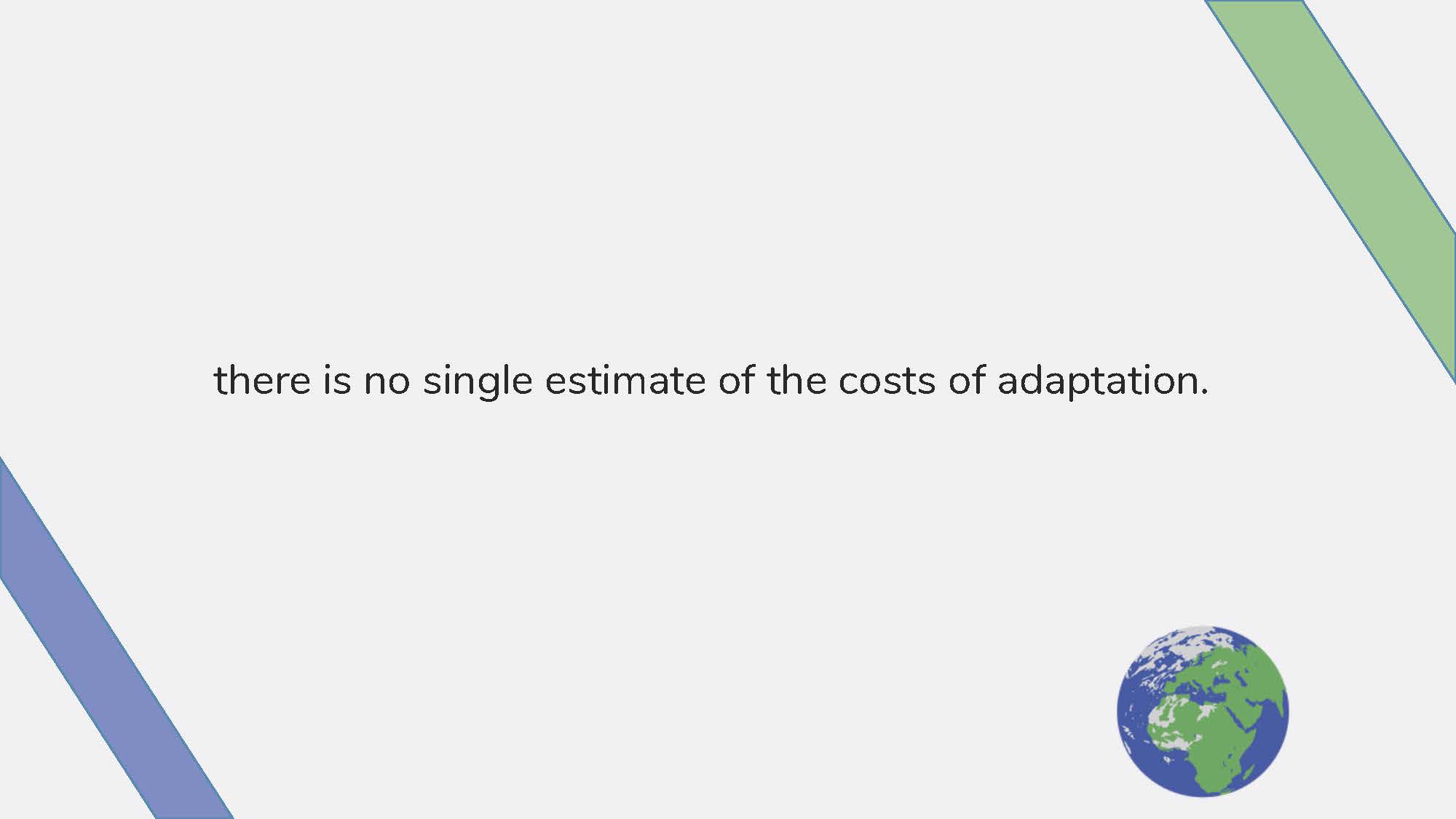 Source: 2016 UNEP Adaptation Gap Report
Source: 2016 UNEP Adaptation Gap Report
Article 7
The concept of adaptation has been widely refined prior to the Paris Agreement, with the Conference of the Parties (COP) in Cancun in 2010 forming cohesive international support and robust action plans. The Adaptation Committee was formed, which has broad authority to issue guidance and direct willing countries towards forward-looking investments which are resolute in the face of intensifying extreme climate events. However, there still remains an important problem to address: there is no single estimate of the costs of adaptation.
The Costs of Adaptation
The Paris Agreement Article 7 added a mandate to create an ‘enhanced’ adaptation framework in order to address the costs of adaptation. While there may be several estimates of the costs of adaptation, it becomes clear when reviewing assumptions that a slight change in each section could wildly inflate costs. Foresight in defining adaptation investments will reduce costs by several factors. According to a United Nations Environment Programme (UNEP) Report, costs for adaptation will likely increase by two-to-three times compared to current global estimates by 2030, and four-to-five times greater by 2050. The Paris Agreement calls for ‘enhanced’ adaptation by encouraging developed country funding via the Adaptation Fund, reporting on adaptation planning every five years starting in 2020, and discussion on methodology development. The most widely circulated target of global adaptation finance is $100 billion per year by 2020. However, as previously mentioned, it will be difficult to confirm when the target is reached.
Lack of Transparency
Lack of transparency from private sector adaptation finance, including autonomous adaptation, will ensure that the costs remain not only difficult to estimate but also difficult to measure. However, it is clear where the majority of adaptation dollars should be spent: developing countries. These countries are projected to emit a substantial majority of future emissions, and therefore will require a majority of adaptation dollars.
Article 8
This article also built upon a previous UNFCCC creation, the Warsaw International Mechanism for Loss and Damage. The Paris Agreement calls for enhanced action, and for the mechanism to serve under the authority and guidance of the Conference of the Parties (COP), which occurs every year. The Agreement also encourages cooperation among parties and will serve as a strong endorsement of the mechanism moving forward. The Mechanism was created in Warsaw at COP19 and was initially authorized to create the Executive Committee (ExCom) and form a two-year workplan. This workplan focused on fostering international cooperation and building capacity to address the effects of extreme climate change. By defining and standardizing categories of loss and damage, the ExCom has slowly been able to facilitate preparedness.
For example, eight slow onset events were identified and expanded upon, which represent threats that do not show its effects immediately.
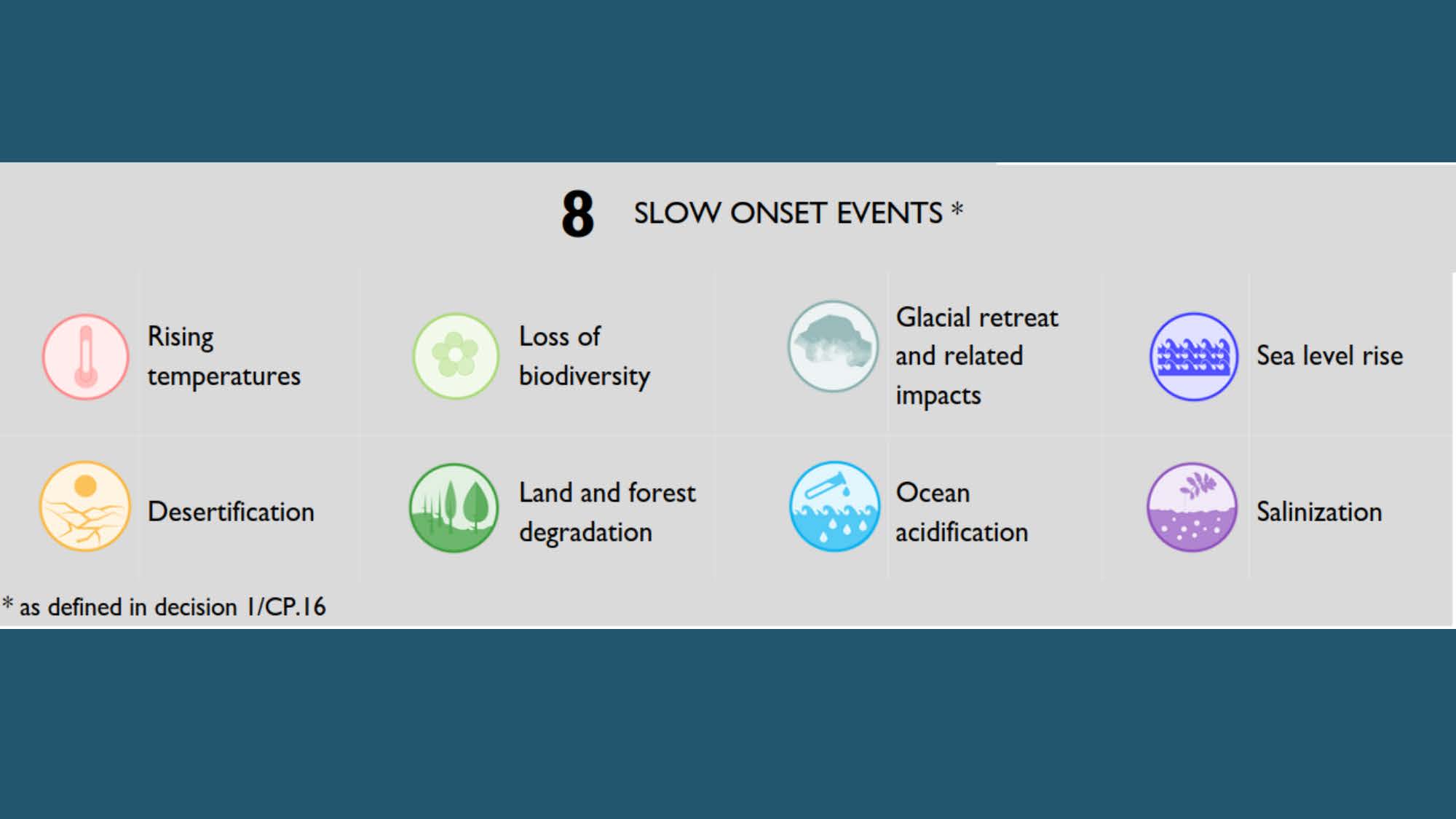 Source: UNFCCC online guide on Loss and Damage
Source: UNFCCC online guide on Loss and Damage
Inflection Points
Sea level rise, rising ocean salinity, and glacial melting are events that can form negative feedback loops upon reaching an inflection point – eventually arriving at the point of no return. The ExCom was recently approved by the COP for a rolling five-year workplan to continue its work on loss and damage. In addition, Article 8 has inspired new solutions that will dampen the extreme effects of climate change. At COP23 in Bonn, Germany, two solutions were announced to help diffuse climate risk from those countries least prepared for its effects: the Fiji Clearing House for Risk Transfer and InsuResilience. Both aim to increase the amount of insured people in climate risk zones.
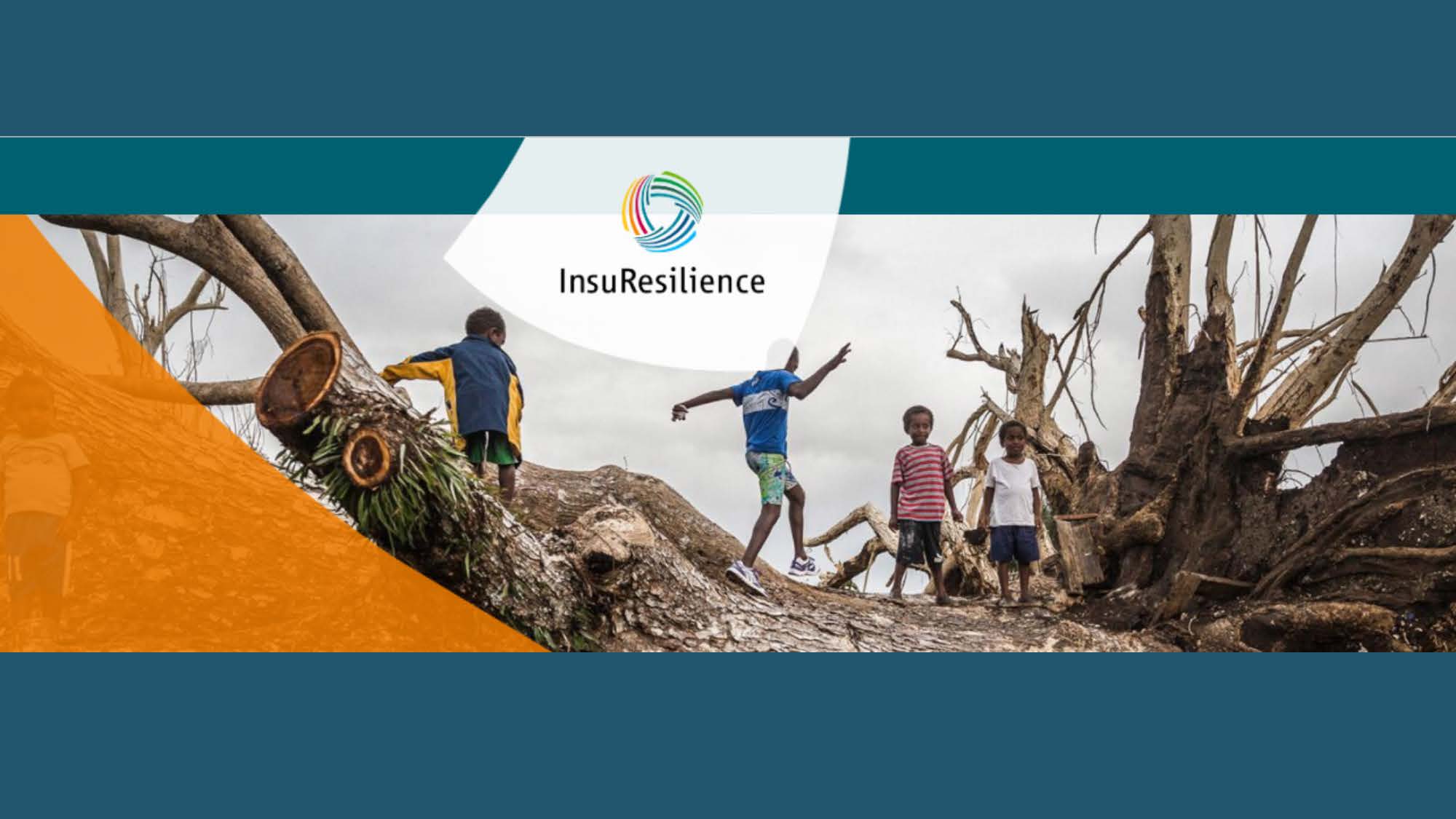
Source: InsuResilience – a global partnership for climate and disaster risk finance and insurance 
Source: World Bank

Source: TT:CLEAR – the UNFCCC Home for Technology
Article 10
One of the more important articles within the Paris Agreement is Article 10, which deals with the technology advancements that are absolutely necessary to achieve the targets set forth in Article 2. Similar to Article 8, a mechanism was created prior to 2015 but was enhanced by the Agreement. The Technology Mechanism was formed in Cancun 2010 with two subsidiary bodies: the Climate Technology Center and Network (CTCN) and the Technology Executive Committee (TEC).
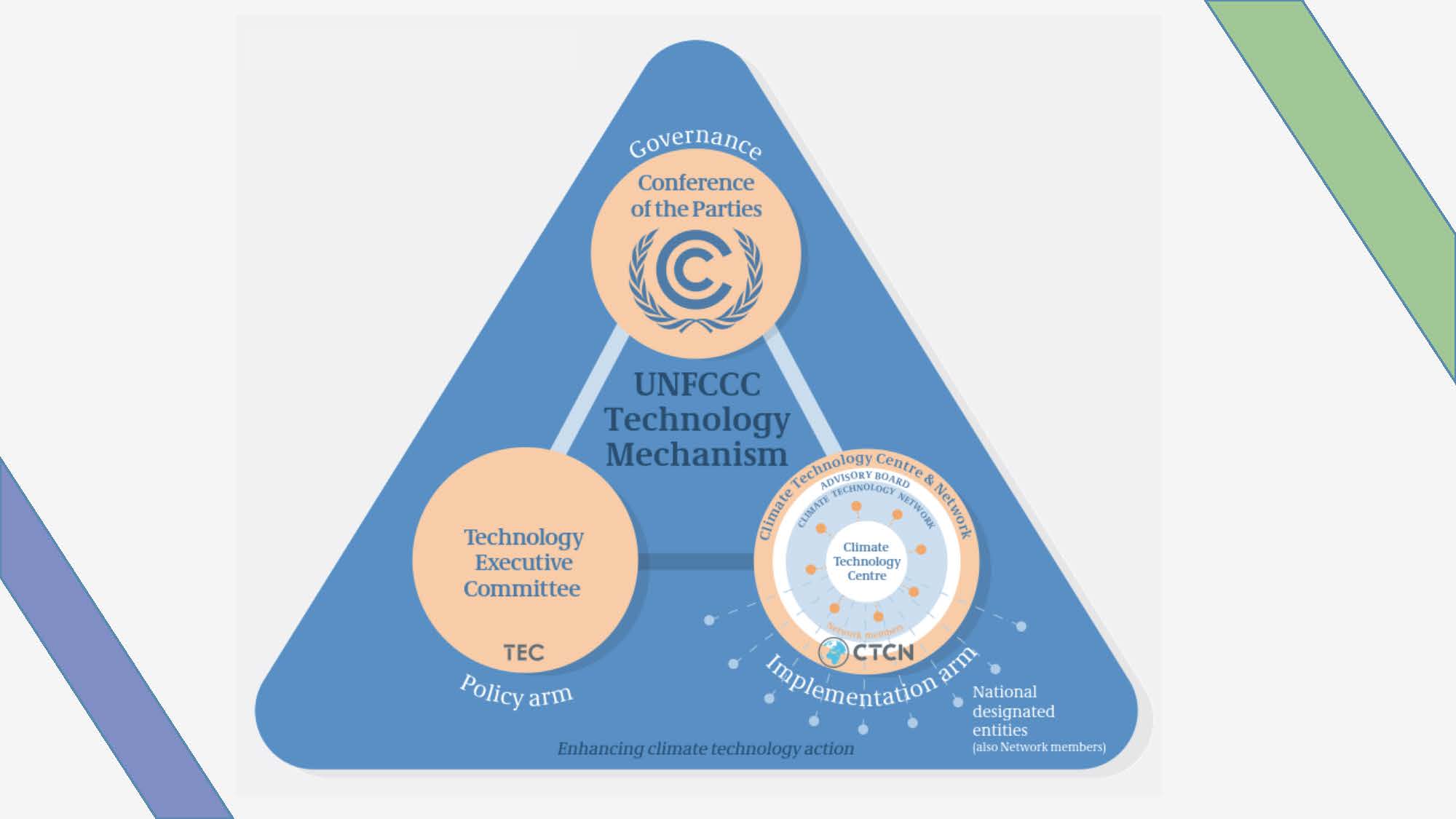
Source: UNFCCC Technology Mechanism Overview
The TEC serves as the policy arm while the CTCN serves as the implementation arm in order to roll out new technologies across the globe and manage difficult cross-border disputes that can come out of transferring IP between companies and nations. The TEC provides policy recommendations and supports the efforts of countries to develop and enhance their technology profile.
Technology Needs Assessment (TNA) creates a full picture of what technologies are essential to the achievement of Paris Agreement targets for a specific country. Subsequently, the Technology Action Plan (TAP) will lay out a plan for completion of the needs assessment .It is important to note that solutions will vary by country, and are assessed and executed using the TNA/TAP process. The most important outcome of COP21 in Paris was the determination that the Technology Mechanism was to serve the Paris Agreement. In addition, it called for greater cooperation and additional financial support for developing country parties. To date, close to 100 countries have completed a TNA, and over 350 projects have been created and are seeking support from those very countries. Many exciting developments have resulted from this mechanism, and emphasizes the importance of tailoring technology to the specific needs of each country.
For example, a technology brief released by the TEC in 2015 highlighted solutions for Africa in which renewable electricity grid solutions at the nano-grid level (serving tens of customers), the micro-grid level (serving hundreds of customers), and the mini-grid level (serving thousands of customers). This unique approach demonstrates that solutions come in many different forms, validating the foundational purpose of the Technology Mechanism.
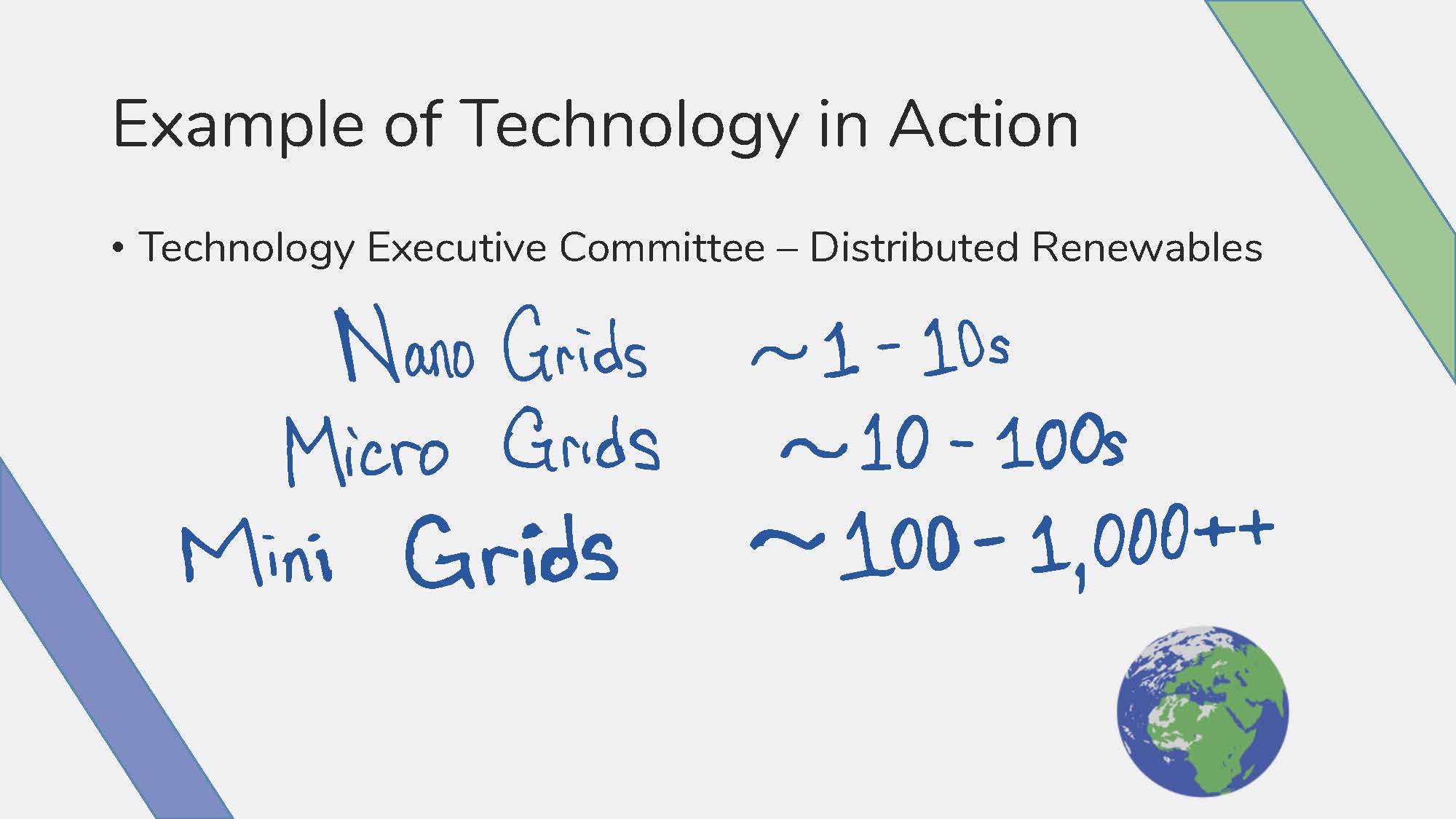
Source: Technology Executive Committee Brief #8
Article 13
The problem of lack of transparency was mentioned earlier. Article 13 focused on implementing transparency, so Article 13 is widely known as the backbone of the Agreement.
Implementing Transparency
In the age of social media and the endless free flow of information, it is curious that climate data and clear Paris Agreement targets are not consistently and effectively communicated to the global population.
The writers of the Paris Agreement emphasized the importance of measurement, reporting, and valuation (MRV) when a country reports its emissions. Measurement and valuation are critical because different standards can often be used when converting greenhouse gas emissions into a single metric that can be compared across countries.
If a country is not accurately recording its inventory of greenhouse gas emissions, our path to a 1.5 degree Celsius emissions scenario will be far less likely. Similarly, if a country reports adjustments to its emissions several years after reporting initial emissions numbers, the data will be unreliable and world leaders could make ill-informed decisions affecting future emissions scenarios. As with most sections of the Paris Agreement, the Transparency Mechanism existed beforehand, having been mandated as part of the original UNFCCC treaty in 1992.
Capacity-building
The Agreement places capacity-building in a category of its own, stating that from the period of 2015 through 2020 that developing country parties should focus on increasing their ability to report on their emissions. Completeness and timeliness are two aspects of emissions reporting that will become crucial over the coming decades. For that reason, the Agreement expanded upon the role of developing countries in global reporting capacity. Previously, only developed countries were required to submit National Communications (NCs) every four years, and Biennial Reports every two years. Paris extends this to all countries, with some exceptions. All countries must put forth their greatest efforts and ambitions to achieve adequate MRV capacity, but are entitled to assistance as part of this process from the international community. Each submission will be subject to a Technical Expert Review (TER), which will subject the data to multilateral review and a facilitative consideration of each country’s progress. Debates on how to balance mitigation with more comprehensive measures continue.
Final Thoughts
When considering the Agreement in the abstract, it is easy to misrepresent what the document stands for. However, when exploring certain articles more deeply, it becomes easier to draw inspiration and form ideas that contribute to a climate solution. While these five articles present technical solutions, education can offer a far more lasting legacy for the Agreement as we enter into the 2020s, a critical decade, which will determine the success or failure of Paris. The UN must create innovative solutions to raise awareness and simplify the issues laid out in the Agreement. This can come in the form of social media campaigns, simplified standards, or grassroots political activism. Social media influencers carry far more weight for advertisers than other mediums of communication, and initiating a paid partnership with these personalities to improve the awareness of younger audiences will enhance the mission of the UNFCCC. Understanding the targets that must be reached can be simplified as well. The global standard of carbon measurement is shown as mtC02e or megatons of carbon dioxide equivalent emissions. While proper scientific units are important to scientists, converting or rebranding this measurement to ‘carbon dollars’ can remove all doubt from activists who are not particularly well-versed on the conversion rate between hydrofluorocarbons and carbon dioxide. And lastly, activism can be shown at the ballot box by endorsing candidates that support Renewables Portfolio Standards (RPS), which mandates a certain percentage of electricity generation originates from renewables sources. These ideas come from inspiration that can be found in the pages of the Paris Agreement.
As a final action item, consider following one of the below Twitter accounts to stay updated on climate reporters, influencers, scientists, and activists.
- @asaadrazzouk – https://twitter.com/AssaadRazzouk
- @sustainable2050 (Kees van der Leun) https://twitter.com/sustainable2050
- @mikehudema https://twitter.com/mikehudema
- @emilyhholden (climate reporter) https://twitter.com/emilyhholden
- @khayhoe (climate scientist) https://twitter.com/khayhoe
- @kimmelman (architect, but also climate reporter) https://twitter.com/kimmelman
- @PespinosaC (Patricia Espinosa, UNFCCC secretary) https://twitter.com/PespinosaC
- @iniaseruiratu (Fiji representative for COP23) https://twitter.com/iniaseruiratu
- @UCSLiz https://twitter.com/UCSLiz
- @UNFCCC https://twitter.com/UNFCCC
- @IPCC_CH https://twitter.com/IPCC_CH
- @YaleClimateComm https://twitter.com/YaleClimateComm
- @ClimateBrad https://twitter.com/ClimateBrad
- @KevinClimate (climate change professor) https://twitter.com/KevinClimate
- @EricHolthaus (meterologist) https://twitter.com/EricHolthaus
- @ClimateCEOs https://twitter.com/ClimateCEOs
- @COP23 (climate change conference) https://twitter.com/COP23
- @Len_Shaffrey (climate scientist) https://twitter.com/Len_Shaffrey
- @UNEP https://twitter.com/UNEP
- @DrSimEvans https://twitter.com/DrSimEvans
- @MattMcGrathBBC https://twitter.com/MattMcGrathBBC
- @BigGreenClimate (Erich Osterberg) https://twitter.com/BigGreenClimate
- @APRC_CF (Climate Finance) https://twitter.com/APRC_CF
- @BrianReports (climate reporter) https://twitter.com/BrianReports
- @SEIA (solar industry) https://twitter.com/SEIA
- @NOAAComms https://twitter.com/NOAAComms
- @21centuryearth (paris agreement awareness acct) https://twitter.com/21centuryearth
- @SustainBrands https://twitter.com/SustainBrands
- @SustDev (UN) https://twitter.com/SustDev
- @climatehawk1 (climate activist, rest in peace) https://twitter.com/climatehawk1
- @KenCaldeira (climate scientist) https://twitter.com/KenCaldeira
- @Weather_West (climate scientist) https://twitter.com/Weather_West
- @CharlesKolstad (climate professor) https://twitter.com/CharlesKolstad
- @UCSshana (climate preparedness specialist) https://twitter.com/UCSshana
- @AntarcticAnthro (Antarctic anthropologist) https://twitter.com/AntarcticAnthro
- @ClimateKIC (EU climate initiative) https://twitter.com/ClimateKIC
Head to Twitter.com to follow these climate leaders.
by Jack Cartier Walsh for earthDECKS
